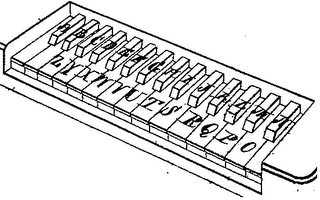Before going on with the history of Dr. Dvorak's struggle to have his invention accepted, we should look at how the typewriter keyboard most in use today came about. It turns out that this keyboard was designed experimentally by Christopher Sholes, the inventor of the typewriter, to SLOW THE TYPIST DOWN. The keys on the early machines hung down in sort of a basket arrangement, and pivoted up to strike the platen (roller) from underneath. ... Since the keys had no springs on them, they fell back into place by gravity. This meant their action was very sluggish, and if two keys that were close together in one quadrant of this "basket" were struck rapidly, one after another, they would jam. To overcome this problem, Sholes moved the keys around experimentally until the machine seemed to operate with a minimum of jamming. What he actually did was to make many commonly-used letter sequences awkward and slow to execute. Thus, by "anti-engineering" his typewriter from a human factors point of view, he was able to slow it down so it would function to his satisfaction. -- Robert Parkinson: "The Dvorak Simplified Keyboard: Forty Years of Frustration", Computers and Automation, Vol.21, No.11 (November 1972), pp.18-25.
Hoax. Or else, Mr. Parkinson was too credulous of Dr. August Dvorak's hypothesis. In English the most frequently-used letter sequence is "th". On QWERTY keyboard, you see T and H are very easy to strike rapidly. They are neither awkward nor slow to execute. The second frequently-used letter sequence is "er" + "re", which is not awkward, either.
As I mentioned before, Mr. Christopher Latham Sholes started his keyboard from alphabetical arrangement,  and then imitated piano-like keyboard of the Hughes-Phelps printing telegraph (shown right, taken from U. S. Patent No.26003) in 1867. He changed the keys into button-like ones in April, 1870. In his new model he moved vowels to the upper row of the keyboard in order to put the twenty-six letters in ten columns (shown below, taken from Koichi Yasuoka: "QWERTY Revisited", Journal of Information Processing and Management, Vol.48, No.2 (May 2005), pp.115-118). It's the origin of QWERTY.
and then imitated piano-like keyboard of the Hughes-Phelps printing telegraph (shown right, taken from U. S. Patent No.26003) in 1867. He changed the keys into button-like ones in April, 1870. In his new model he moved vowels to the upper row of the keyboard in order to put the twenty-six letters in ten columns (shown below, taken from Koichi Yasuoka: "QWERTY Revisited", Journal of Information Processing and Management, Vol.48, No.2 (May 2005), pp.115-118). It's the origin of QWERTY.



0 Comments:
Post a Comment
<< Home